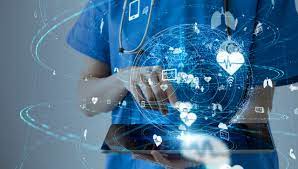The information technology advantages of health (HIT) include its ability to store and retrieve data; the ability to communicate patient information quickly in a legible format; improved protection of medicines through increased legibility, which could minimize the risk of medication errors; and the ability to retrieve patient information easily.
1. Reduced Test and Procedure Redundancy
Electronic health records (EHR) simplify the exchange of patient information; remove unnecessary tests and procedures; and reduce pain, annoyance, risk, and medical costs. Using this technology, patients can automatically authorize access to information needed by their caregivers that is timely and important.
2. Reduced costs
You will save money on the purchase of telecom and wireless networking devices from the right Healthcare Information Technology company, give you a competitive edge in your marketplace and save you money as you introduce new technologies. From automating routine activities and handling large workers to quickly getting the right information in front of the people who need it, IT will help the facility run more effectively in many ways.
3. Improvement of Patient Treatment
Includes diagnosis records, medical history, allergic responses, vaccinations, treatment information schedules, test results, etc., by gathering and storing patient information. Healthcare Information Technology offers a full and orderly system for healthcare providers that allow them to effectively communicate with their patients and ultimately provide them with more effective care.
4. Reduce the paperwork
For some time to come, the clipboard and new patient questionnaire will remain a characteristic of your doctor’s office. But if more information is applied to your EHR, as soon as you arrive, your doctor and hospital will have more of that data available. This implies fewer and shorter forms for you to finish, reducing the “hassle factor” of health care.
5. Enhanced Performance Analysis
The use of technology will allow a host of avenues to monitor employee results, patient care, stability, and productivity of the organization. Based on individual skill sets, health information technology could compute staffing decisions. It may also make it easier to proactively make treatment choices based on previous performance results. Patients may submit confidential feedback on their quality of treatment, offering clearer feedback to management on staff skills and health. And regulatory bodies may use success metrics to measure the efficacy of organizations more accurately.
Related: The Technology helps students in Online Education
6. Improved medication safety
A host of automated checks and balances have been implemented by technology to warn clinicians when they are about to prescribe medications that could interfere with or to which patients are allergic. Technology features have replaced books and human memory with automated protections that save lives, from computerized physician order entry (CPOE) systems to the alerting features in EHRs.
7. Communication between patients and providers gets better
Patient portals can allow patients to review their histories, prescriptions, and test results as an extension of the EHR. Messaging systems ensure that you can write your doctor a confidential note and obtain personalized treatment faster than ever. Easy features such as automatic check-in alerts or appointment scheduling also make the pressure on both patients and clinicians easier.
8. Quality of care
A variety of clinics, independent practices, and hospitals offer care for most patients. This history tracks past symptoms, treatments, allergies, problems, etc. It is unsafe at most and at least highly inconvenient for the patient not to have access to any of those data points due to the lack of comprehensive healthcare IT systems. The primary advantage of interoperability is full visibility and access to patient data for both healthcare institutions and patients.
9. Minimized Operational cost
Healthcare information technology allows health providers to distribute resources in a scheduled manner and save potentially large sums of costs, energy, and materials. In short, you can improve the healthcare program for patients while saving a lot of money.
10. Instant access
Clinicians may immediately access the appropriate patient records, such as vaccine information, allergies, or medications, speeding up diagnosis and care. Records can be accessed from another town or state easily.
Read more:


